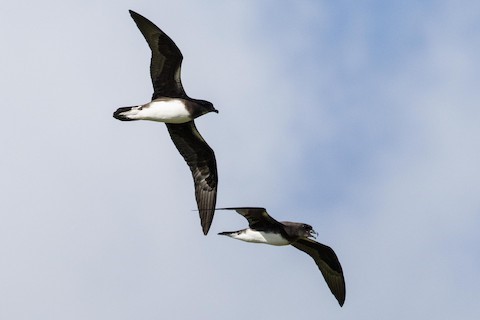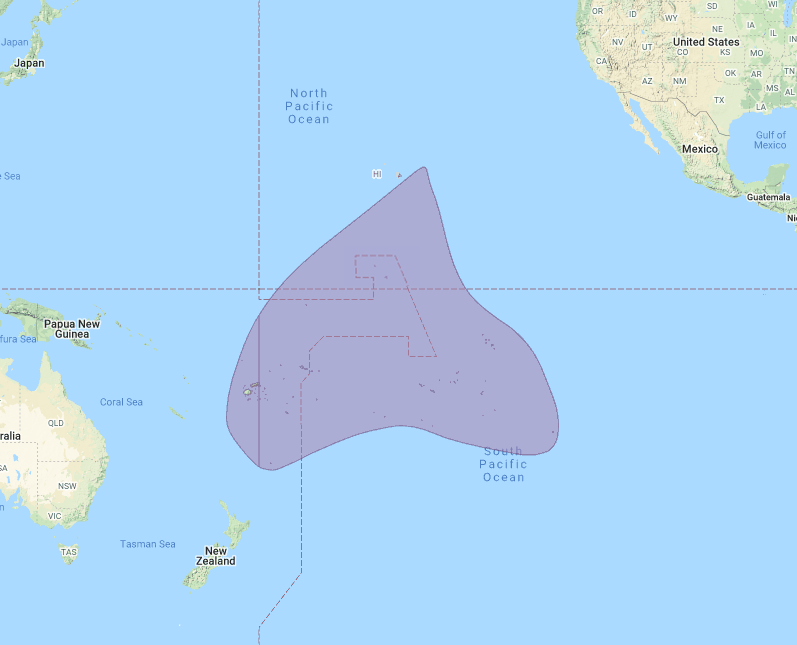Birdfinding.info ⇒ Uncommon, endangered, and declining. It remains locally common around its principal breeding grounds on Kiritimati and the Marquesas, uncommon in the Pitcairns, and can sometimes be found around Easter Island.
Phoenix Petrel
Pterodroma alba
Breeds in Polynesia and disperses within the central tropical Pacific.
Breeding. Breeds in the Phoenix, Line, Marquesas, and Pitcairn Islands, nesting in the open on remote atolls and islets in colonies with other tropical seabirds. Breeding has also been suspected on Easter Island, and at least formerly in the Tuamotu Archipelago, and Tonga.
The bulk of the population nests on Kiritimati in the Line Islands, in loose colonies that were estimated in 2007 at between 2,300 and 3,800 pairs. In the Phoenix Islands, there is a significant colony on Rawaki Island.
In the Marquesas, a colony on Hatuta’a was estimated at more than 250 pairs in 2007, and small colonies of a few pairs each have been reported from Ua Pou, Fatu Huku, and Hatu-Iti.
Formerly bred throughout the Pitcairns, but extirpated from Ducie and Henderson Islands. A small colony has persisted on Oeno Island.
Nonbreeding. Its range at sea is not well known, but generally encompasses Polynesia and adjacent tropical seas.
It has been recorded west to Fiji, south to the Kermadec Islands (Raoul Island, March 7, 1913; and Curtis Island, May 21, 1982), and north to waters east-southeast of Hawaii—but not certainly documented within Hawaiian waters.
There is at least one exceptional record from the Indian Ocean at Round Island near Mauritius (photographed by Johannes Fischer in June 2013.)
Identification
A medium-large gadfly petrel with uniformly dark-brown upperparts, a dark-brown hood, and mostly white underparts.
The dark hood extends down to the chest. The border between the hood and the white underparts is well-defined but somewhat irregular.
The hood can be all-dark, but a large portion of individuals have a whitish patch on the throat—variable in extent.
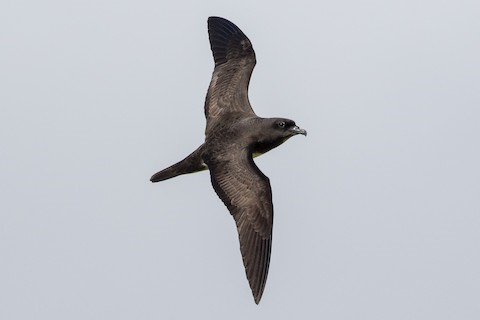
Phoenix Petrel, dorsal view showing all-dark-brown upperparts. (Nimroona, Kiritimati, Line Islands, Kiribati; August 15, 2019.) © Eric VanderWerf
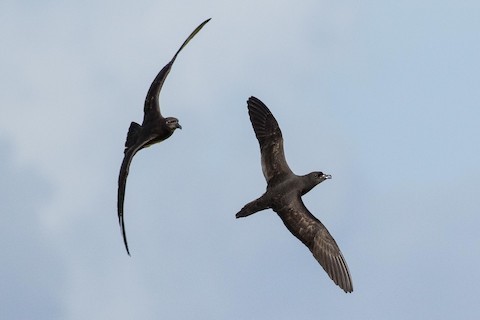
Phoenix Petrel, dorsal view showing all-dark-brown upperparts. (Nimroona, Kiritimati, Line Islands, Kiribati; August 15, 2019.) © Eric VanderWerf
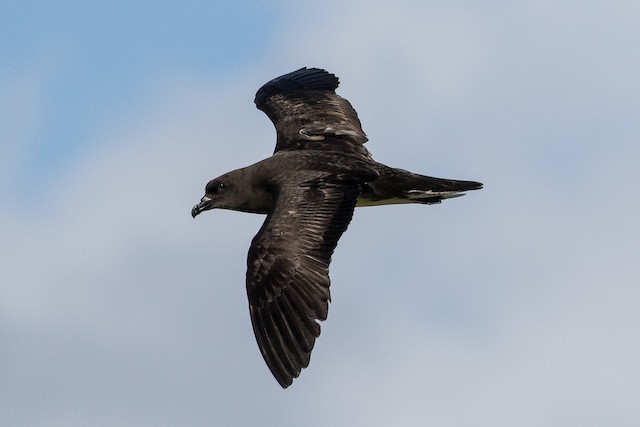
Phoenix Petrel, dorsal view showing all-dark-brown upperparts. (Nimroona, Kiritimati, Line Islands, Kiribati; August 15, 2019.) © Eric VanderWerf
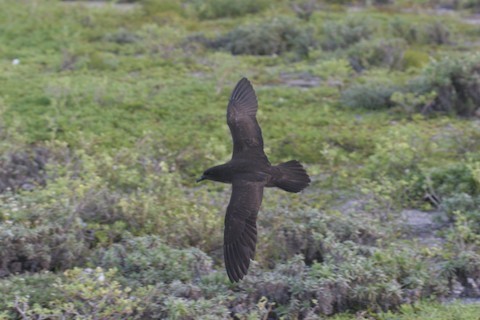
Phoenix Petrel, dorsal view showing all-dark-brown upperparts. (Kiritimati, Line Islands, Kiribati; June 9, 2007.) © Eric VanderWerf
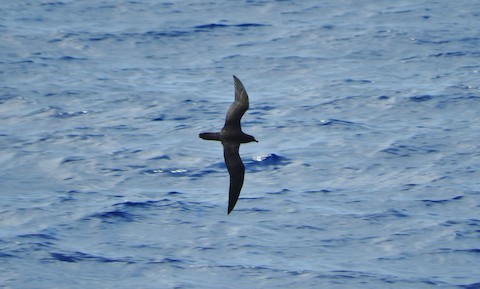
Phoenix Petrel. (Mid-Pacific Ocean between Kiribati and Hawaii; September 28, 2015.) © Noam Markus
The undersides of the wings typically appear two-toned, with mostly blackish wing linings that contrast with dark but reflective undersides of the flight feathers and adjacent coverts. The wing linings also have a whitish patagial stripe—which is indistinct but consistent.

Phoenix Petrel. (Motu Tapu, Kiribati; August 18, 2019.) © Eric VanderWerf
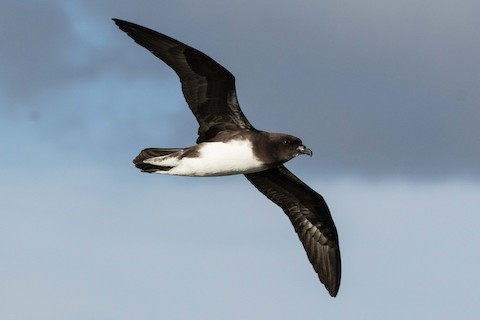
Phoenix Petrel. (Nimroona, Kiritimati, Line Islands, Kiribati; August 15, 2019.) © Eric VanderWerf
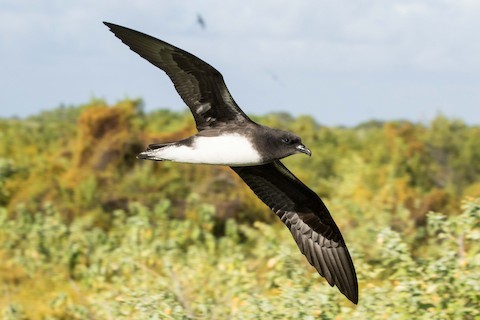
Phoenix Petrel. (Nimroona, Kiritimati, Line Islands, Kiribati; August 15, 2019.) © Eric VanderWerf

Phoenix Petrel. (Motu Tapu, Kiribati; August 18, 2019.) © Eric VanderWerf
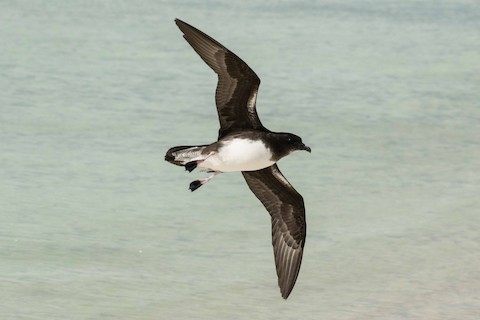
Phoenix Petrel. (Motu Tapu, Kiribati; August 18, 2019.) © Eric VanderWerf
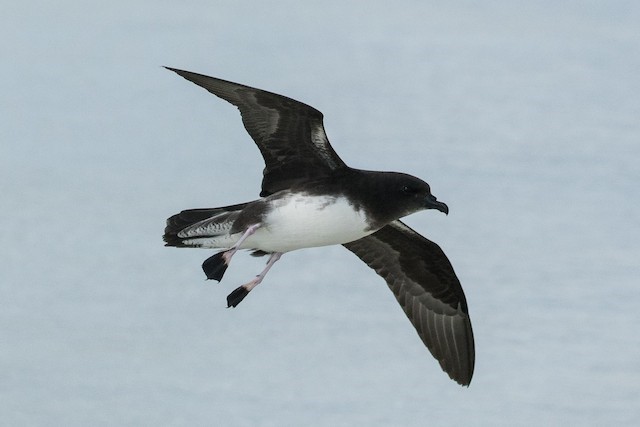
Phoenix Petrel. (Motu Tapu, Kiribati; August 18, 2019.) © Eric VanderWerf
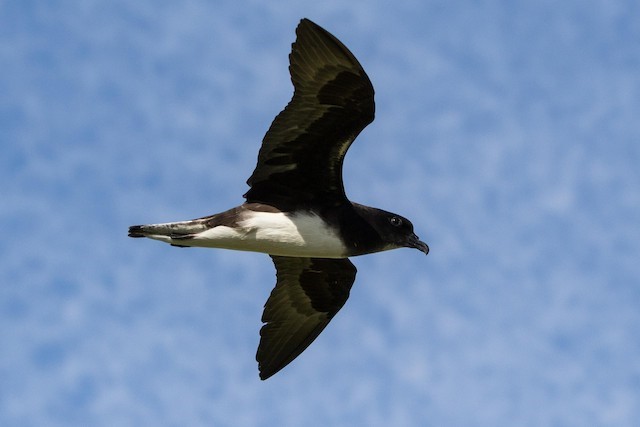
Phoenix Petrel. (Nimroona, Kiritimati, Line Islands, Kiribati; August 15, 2019.) © Eric VanderWerf
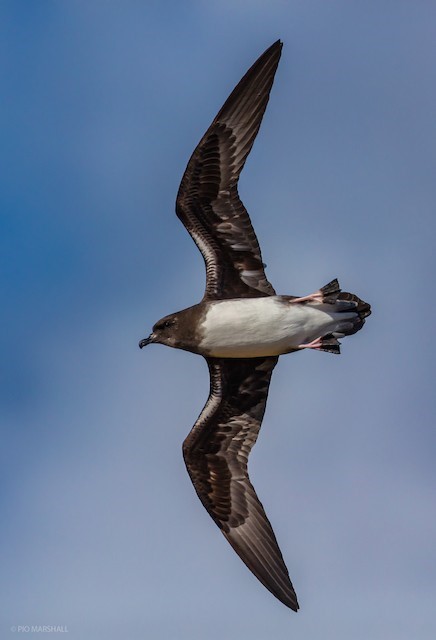
Phoenix Petrel. (Easter Island, Chile; June 11, 2018.) © Pio Marshall
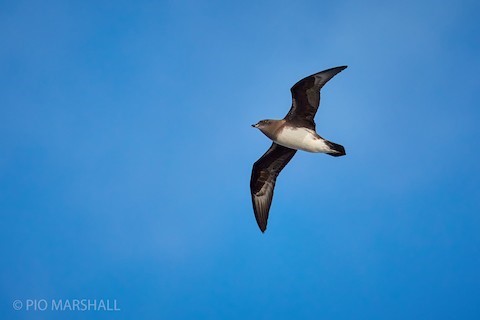
Phoenix Petrel. (Easter Island, Chile; June 11, 2018.) © Pio Marshall
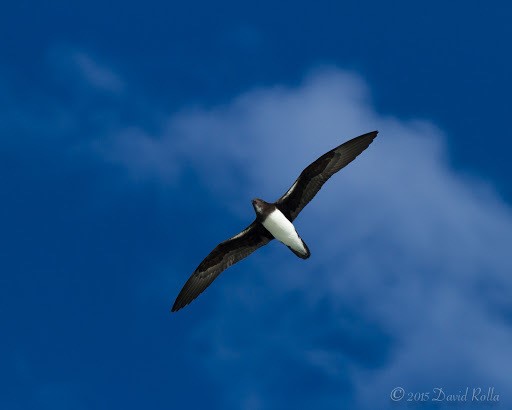
Phoenix Petrel. (Kiritimati, Line Islands, Kiribati; February 23, 2015.) © David Rolla
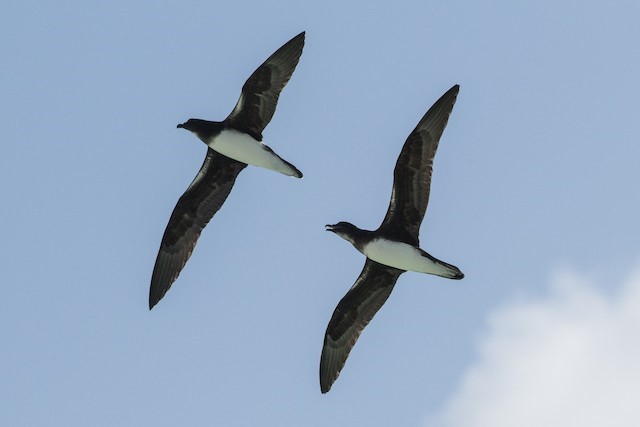
Phoenix Petrel. (Motu Tapu, Kiritimati, Line Islands, Kiribati; August 18, 2019.) © Eric VanderWerf
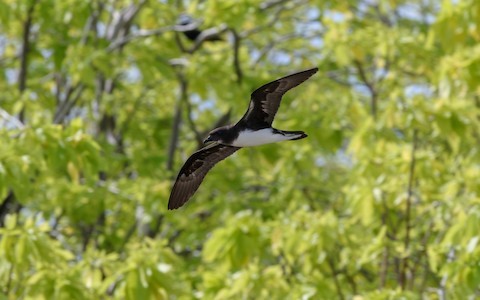
Phoenix Petrel. (Motu Tapu, Kiritimati, Line Islands, Kiribati; February 22, 2019.) © George Henry Stirrett
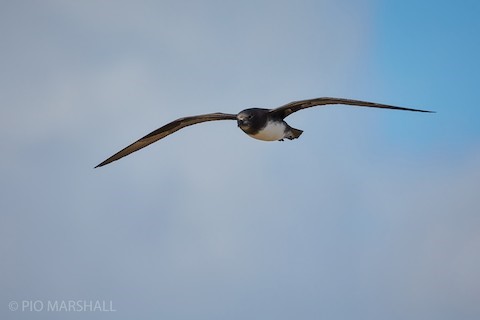
Phoenix Petrel. (Easter Island, Chile; June 11, 2018.) © Pio Marshall
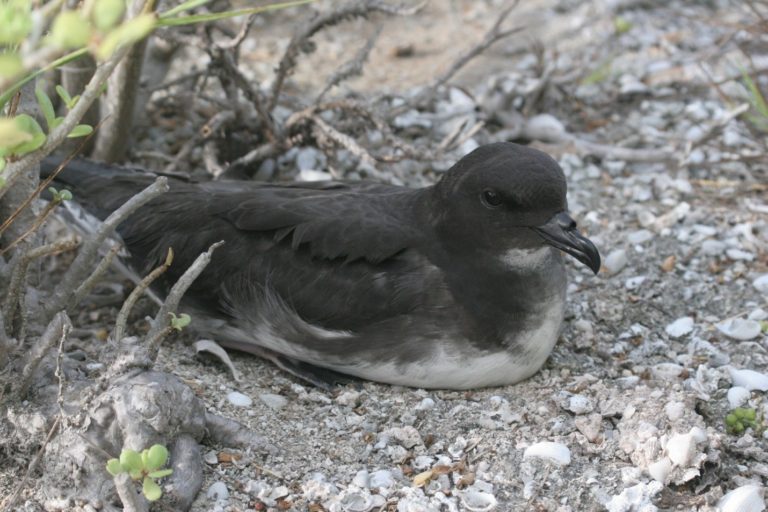
Phoenix Petrel at nest. (Kiritimati, Line Islands, Kiribati; June 9, 2007.) © Eric VanderWerf
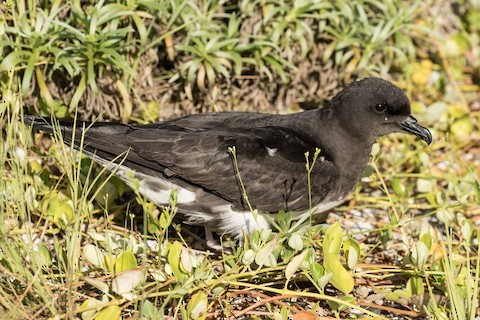
Phoenix Petrel, in nesting colony. (Nimroona, Kiritimati, Line Islands, Kiribati; August 15, 2019.) © Eric VanderWerf

Phoenix Petrel, in nesting colony. (Rawaki, Phoenix Islands, Kiribati; June 2008.) © Mike Thorsen
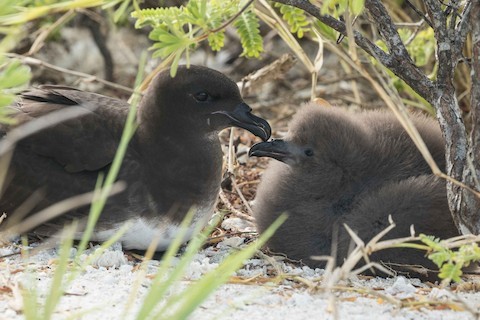
Phoenix Petrel, adult with large nestling. (Motu Tapu, Kiribati; August 18, 2019.) © Eric VanderWerf
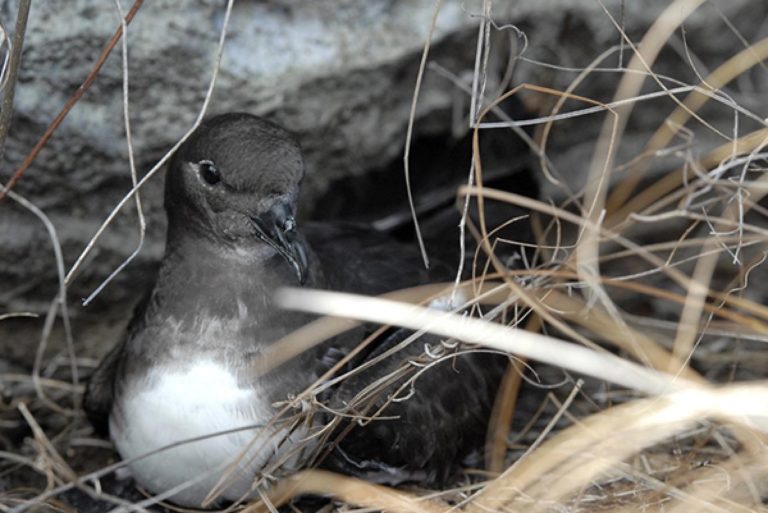
Phoenix Petrel, on nest. (Hatuta’a, Marquesas Islands, French Polynesia; June 2010.) © Fred Jacq
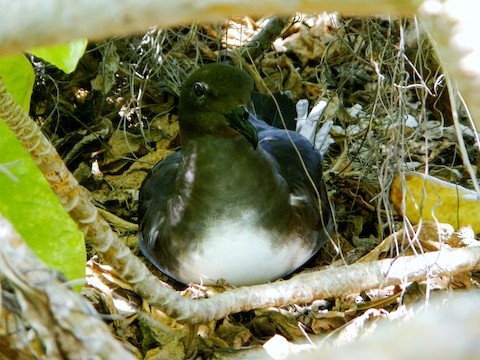
Phoenix Petrel, on nest. (Kiritimati, Line Islands, Kiribati; March 8, 2013.) © Jack Edick

Phoenix Petrel, pair at nest. (Rawaki, Phoenix Islands, Kiribati; June 2008.) © Mike Thorsen
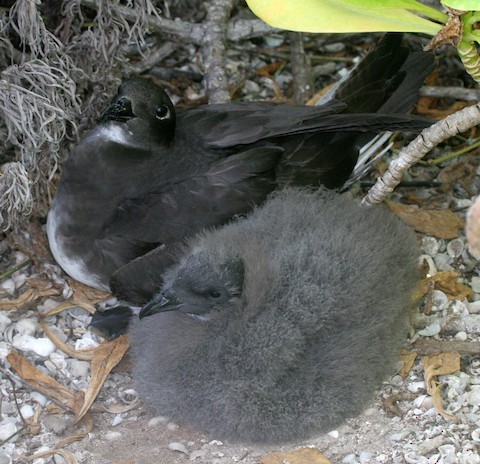
Phoenix Petrel, adult with large nestling. (Kiritimati, Line Islands, Kiribati; June 9, 2007.) © Eric VanderWerf
Cf. Herald Petrel. Herald and Phoenix Petrels both occur over large portions of the tropical Pacific Ocean. They are very similar in size, shape, and overall pattern, and both typically show white around the chin. Phoenix generally has darker underwings than Herald, but often shows a mottled pattern that is similar to Herald’s, so underwing pattern alone is not a reliable distinction.
More reliable are their underparts patterns and overall coloration:
Underparts Pattern: Phoenix has a more extensive dark hood, which covers the whole chest, and an essentially all-white undertail. So compared to Herald, Phoenix’s white underparts are smaller and shifted toward the tail.
Overall Coloration: Phoenix generally has more even-toned plumage than Herald: blackish upperparts and hood contrasting with mostly white underparts. Herald’s upperparts and hood are somewhat variable, but apparently never as dark as Phoenix’s.
Cf. Tahiti Petrel. Phoenix and Tahiti Petrels overlap widely across the tropical Pacific Ocean. They are very similar in plumage but differ significantly in structure and flight behavior. Phoenix is a typical mid-sized Pterodroma, with an active, bounding flight pattern, whereas Tahiti is proportionately long-winged, has a strikingly thick bill, and has a more languid flight pattern, gliding like an albatross.
Their underwing patterns also differ. Tahiti Petrel typically shows either all-dark underwings or a whitish central stripe, whereas Phoenix typically shows two-toned underwings with a consistent but subtle whitish patagial stripe.
Notes
Monotypic species.
IUCN Red List Status: Endangered.
References
BirdLife International. 2018. Pterodroma alba. The IUCN Red List of Threatened Species 2018: e.T22698001A132618432. https://dx.doi.org/10.2305/IUCN.UK.2018-2.RLTS.T22698001A132618432.en. (Accessed May 29, 2021.)
eBird. 2021. eBird: An online database of bird distribution and abundance. Cornell Lab of Ornithology, Ithaca, N.Y. http://www.ebird.org. (Accessed May 29, 2021.)
Harrison, P. 1983. Seabirds: An Identification Guide. Houghton Mifflin, Boston.
Howell, S.N.G., and K. Zufelt. 2019. Oceanic Birds of the World. Princeton University Press.
Miskelly, C.M. 2013. Phoenix petrel. In New Zealand Birds Online (Miskelly, C.M., ed.). http://nzbirdsonline.org.nz/species/phoenix-petrel. (Accessed May 29, 2021.)
Pratt, H.D., P.L. Bruner, and D.G. Berrett. 1987. A Field Guide to the Birds of Hawaii and the Tropical Pacific. Princeton University Press.
Pyle, R.L., and P. Pyle. 2017. The Birds of the Hawaiian Islands: Occurrence, History, Distribution, and Status. Version 2 (January 1, 2017). http://hbs.bishopmuseum.org/birds/rlp-monograph/. B.P. Bishop Museum, Honolulu, Hawaii.
Xeno-Canto. 2021. Phoenix Petrel – Pterodroma alba. https://www.xeno-canto.org/species/Pterodroma-alba. (Accessed May 29, 2021.)
